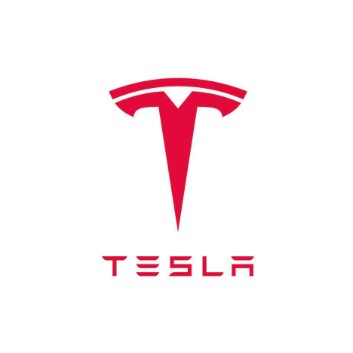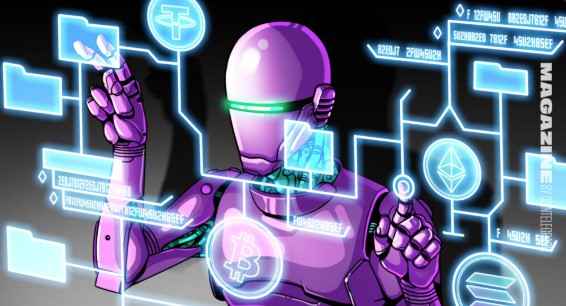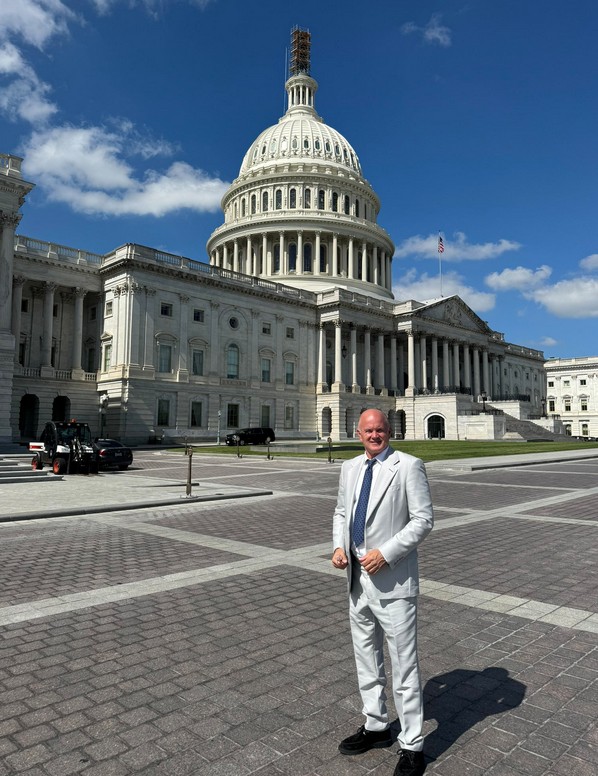Crypto is supposed to be about freedom — permissionless networks, immutable ownership, assets that no government or intermediary can arbitrarily revoke. At least, that was Satoshi’s dream — a vision that has admittedly faded over time as reality butted in.

Amid all the other dying idealism, along came stock tokens, shiny digital wrappers for traditional equities such as Tesla, Apple and Amazon. Suddenly, the crypto space found itself dressed up in Wall Street’s regulatory straitjacket.
Stock tokens, as currently structured, such as Kraken’s, Robinhood’s — and in the future, Coinbase’s — are about as decentralized as a Goldman Sachs board meeting. They’re digital and tokenized, but users must pass KYC to acquire them; they can only move between whitelisted addresses, and issuers can freeze or revoke them at will. In short, they aren’t really crypto at all. They’re securities in a digital costume, playing fancy dress at a DeFi masquerade.
So the question is: how to move from this awkward halfway house of centralized tokenization to a future where owning a tokenized Tesla share feels as free as holding ETH or BTC? And perhaps the harder question: Is that future even possible?
What is tokenization anyway?
When people talk about “stock tokens,” they often blur very different instruments: tokenized public equities, tokenized Treasurys and even tokenized private company shares. In reality, they all fall under the category of security tokens: financial instruments that live on blockchain rails but remain bound by securities law.

Ross Shem, co-founder and chief operating officer at tokenization company Stobox, doesn’t pull his punches.
“Trying to treat tokenized securities such as native crypto assets is naive and dangerous,” he says. “These tokens are bound by securities laws, require KYC and must respect investor protection standards. The only thing they share with crypto is the underlying technology, not the ethos, not the regulation, not the culture.”
For Shem, decentralization is the wrong framing. “True decentralization, in the crypto sense, is incompatible with regulated financial instruments. You can use zero-knowledge proofs or smart contracts for automation and privacy, but you cannot opt out of the rules. Security tokens will not become more ‘crypto.’ On the contrary, traditional finance will become more ‘blockchain.’”
Are tokenized equities just digital IOUs?
That distinction matters because today’s stock tokens are essentially IOUs. Centralized issuers must obey securities law, which means embedding restrictions such as KYC, whitelist-only transfers and revocable contracts. It’s “decentralized theater” dressed up as innovation.
“Wrapping equities into tokens without decentralization just recreates the old system with shinier rails,” says Darren Franceschini, CEO and co-founder of Zekret Labs.
“To make stock tokens truly crypto, you need decentralized custody and compliance checks enforced at the protocol layer, not blind trust in a single issuer. Only then could tokenized equities inherit blockchain’s core guarantees of transparency and censorship-resistance,” he adds.
AI, DeFi and genuine decentralization of stock tokens
So, what would a genuinely decentralized Tesla token look like? It would move permissionlessly, be immutable once in a wallet, plug seamlessly into DeFi protocols and resist censorship by regulators or issuers.
In other words, it would behave like Bitcoin: ownership absolute, control resting solely with the holder.
“As is the nature of RWAs (real-world assets) like stocks, the question here really shouldn’t be how can they be decentralized, but whether the asset is permissionlessly usable, composable and integratable across the decentralized ecosystem,” says Danish Chaudhry, general partner at Paper Ventures. “If an asset can move freely wallet-to-wallet and plug into DeFi without asking anyone’s permission, it’s crypto. If it can’t, it’s just a digital wrapper.”

While this is possible, but difficult, with existing systems, Shashank Sripada, co-founder of Gaia AI, believes that artificial intelligence could well be the missing ingredient.
His company recently launched its AI smartphone for users in South Korea and Hong Kong, which runs AI models directly on the phone, letting users interact with agents without relying on cloud services.
“The real opportunity lies in decentralized AI agents acting as compliance layers themselves, automating KYC, monitoring flows and surfacing alerts transparently onchain,” Sripada says.
“That flips regulation from a political choke point into a protocol feature. It’s self-regulation by code, not decree, and much closer to the culture crypto was built on.”
Stock tokenization likely to be on a spectrum of decentralization
Of course, decentralization isn’t binary. It’s a spectrum, and today’s stock tokens sit firmly at the heavily centralized end. Over time, however, issuers could relax restrictions, regulators might trial sandboxes, and hybrid approaches may emerge.
The biggest roadblock is legal. Equities are among the most tightly regulated instruments worldwide, and most jurisdictions mandate centralized issuance. Any attempt to launch fully permissionless Tesla tokens today would be dead on arrival with regulators.
“Unless stocks are directly issued by public companies onchain where the holders have direct rights to dividends, etc., they can never be truly decentralized since the middlemen issuers control the underlying,” adds Chaudhry.

This is the paradox: The very features that make crypto valuable — permissionlessness, immutability, censorship resistance — are the ones regulators will not allow for equities. Until laws adapt, decentralized stock tokens remain technically possible but legally blocked.
That said, things are changing fast. Earlier this month, Galaxy Digital became the first Nasdaq-listed company to tokenize its shares directly on the Solana blockchain. Unlike derivatives or wrappers, each token carries the full legal and economic rights of shareholders.
Nasdaq itself this week filed for a rule change with the SEC to allow it to offer tokenized shares with the same legal and economic rights as any other share.
Synthetic stock tokens and liquidity problems
Crypto has never been famous for respecting legal boundaries. Instead of tokenizing Tesla shares directly, DeFi protocols such as Synthetix and Mirror have experimented in the past with minting synthetic assets pegged to Tesla’s price. These don’t grant ownership or dividends but do provide exposure — and they’re permissionless.
Yet even synthetic markets face hurdles. Liquidity is one. The sTSLA token saw a grand total of 798 transactions before being phased out in 2021.
James Bernard, partner at Aava, explains why tokenized commodities and, by extension, tokenized equities have tended to lag behind other RWA categories. “Unlike real estate deeds or treasury bills, commodities require reliable custody, storage and verification, which adds complexity and cost. Another major challenge is liquidity,” he says.
“Traditional commodity markets benefit from deep futures and derivatives ecosystems, while tokenized versions lack comparable market depth. Until platforms solve custody, compliance and liquidity hurdles and attract not just retail but also institutional and industrial players — commodities will continue to lag other asset classes in tokenization adoption.”
The same applies to equities; without deep secondary markets, tokenization risks remaining a niche experiment.
Liquidity is further impacted by having multiple issuers putting out competing Tesla tokens and dividing the amount of funds between smaller and smaller pools.
The legal issues with stock tokenization
For lawyers, the debate reveals fundamental tensions in what ownership even means. Gunnercooke, one of the largest global Web3 full-service companies, claims to have been directly involved in drafting around 3% of global crypto regulation.
James Burnie, partner at Gunnercooke, explains:
“The issue for tokenizing stocks is that the underlying asset, the equity, is intrinsically centralized, and there are often specific provisions who can own the equity in a company. Even in models such as in the UAE, in which the token ‘is’ equity, the regulator has required that the owner be identified, which effectively brings a centralizing element.”

He suggests that what’s being decentralized isn’t ownership itself but specific rights, such as claims to dividends. Yet that raises deeper questions: What exactly is it that the holder “gets” with tokenized equity? Simply owning a share token does not mean you own the company, nor is it an intrinsic right to a dividend.
Timo Lehes, co-founder of Swarm — a licensed trading platform for tokenized RWAs — echoes this approach:
“Not all tokenization is created equal. Investors should always understand how an asset is being brought onchain and what rights they hold. For example, if the issuing company goes bankrupt, what happens to tokenholders?
“So, while stock tokens from centralized issuers will never be ‘purely decentralized,’ they can be designed in a way that fuses the best of both worlds: the safeguards of regulated markets and the efficiencies and freedoms of DeFi.”
Will Wall Street become more crypto, or vice versa?
The collision between Wall Street and Web3 is inevitable. Tokenization is not a passing fad; it’s the next chapter in capital markets. But stock tokens today are transitional, not transformational — shinier versions of brokerage IOUs rather than crypto-native assets.
The breakthrough will come when three forces align: regulatory frameworks that accept blockchain as a native settlement layer, hybrid structures that protect investors without neutering composability and cryptographic advances that make compliance and privacy compatible. Only then will stock tokens cross the line from digital wrappers to genuinely decentralized assets.

Monty Munford
Disclaimer
Cointelegraph Features and Cointelegraph Magazine publish long-form journalism, analysis and narrative reporting produced by Cointelegraph’s in-house editorial team and selected external contributors with subject-matter expertise.
All articles are edited and reviewed by Cointelegraph editors in line with our editorial standards. Contributions from external writers are commissioned for their experience, research or perspective and do not reflect the views of Cointelegraph as a company unless explicitly stated.
Content published in Features and Magazine does not constitute financial, legal or investment advice. Readers should conduct their own research and consult qualified professionals where appropriate. Cointelegraph maintains full editorial independence. The selection, commissioning and publication of Features and Magazine content are not influenced by advertisers, partners or commercial relationships.
Illivium’s risk-to-earn deathmatch, Axie Infinity to take ‘big swings’: Web3 Gamer
